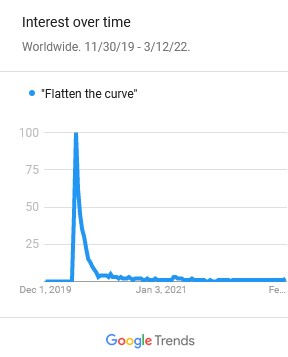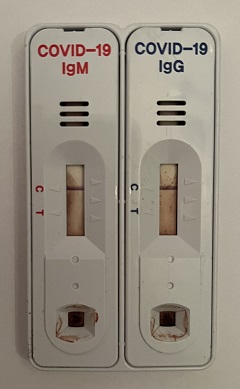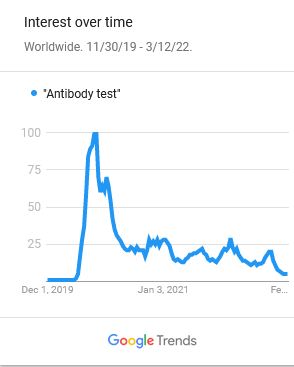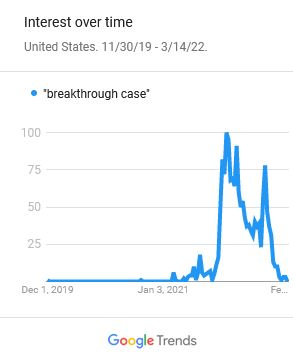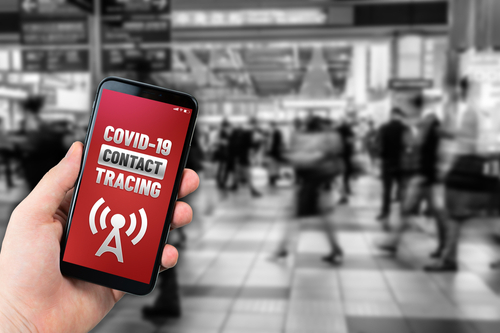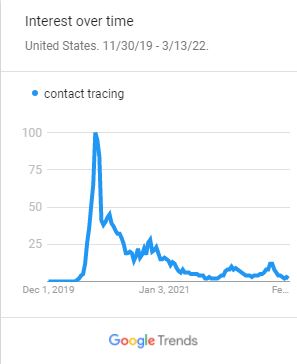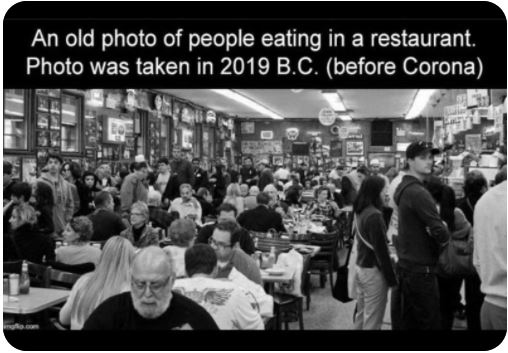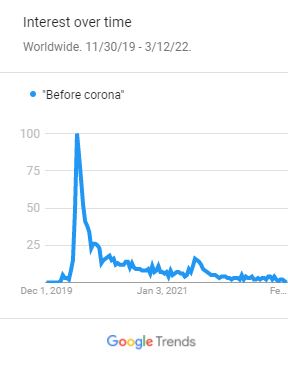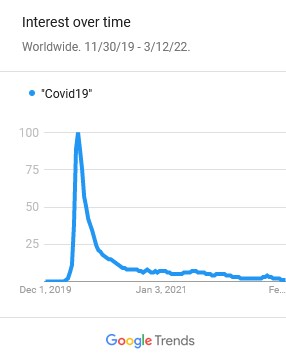Everyone by now understands what social distancing is. It is sometimes referred to as physical distancing. The phrase did not enter public consciousness until the pandemic came to America in March 2020. Merriam Webster’s Dictionary defines it as “the practice of maintaining a greater than usual physical distance (such as six feet or more) from other people or of avoiding direct contact with people or objects in public places during the outbreak of a contagious disease in order to minimize exposure and reduce the transmission of infection.” Social distancing is sometimes referred to as physical distancing.
The CDC expounds on the social distancing phrase as “an essential step in preventing the spread of COVID-19. Social distancing is reducing physical interaction between people and it lowers the chances of spreading illness between people. If you are not fully vaccinated, practice social distancing by putting space (at least 6 feet) between yourself and others. It is especially important during the COVID-19 pandemic to protect people who are at higher risk for severe illness from COVID-19.“
After the initial outbreak of Covid-19, social distancing signs started to appear everywhere, even as decals on shop floors in the supermarket.

Here are a couple of photos I took of social distancing signs during my trips to Idaho and Alaska. The photo below was taken in Idaho located just before the entrance to Yellowstone National Park. The sign adds an interesting word play as social distancing would definitely apply to wild animals like bears and buffalo.
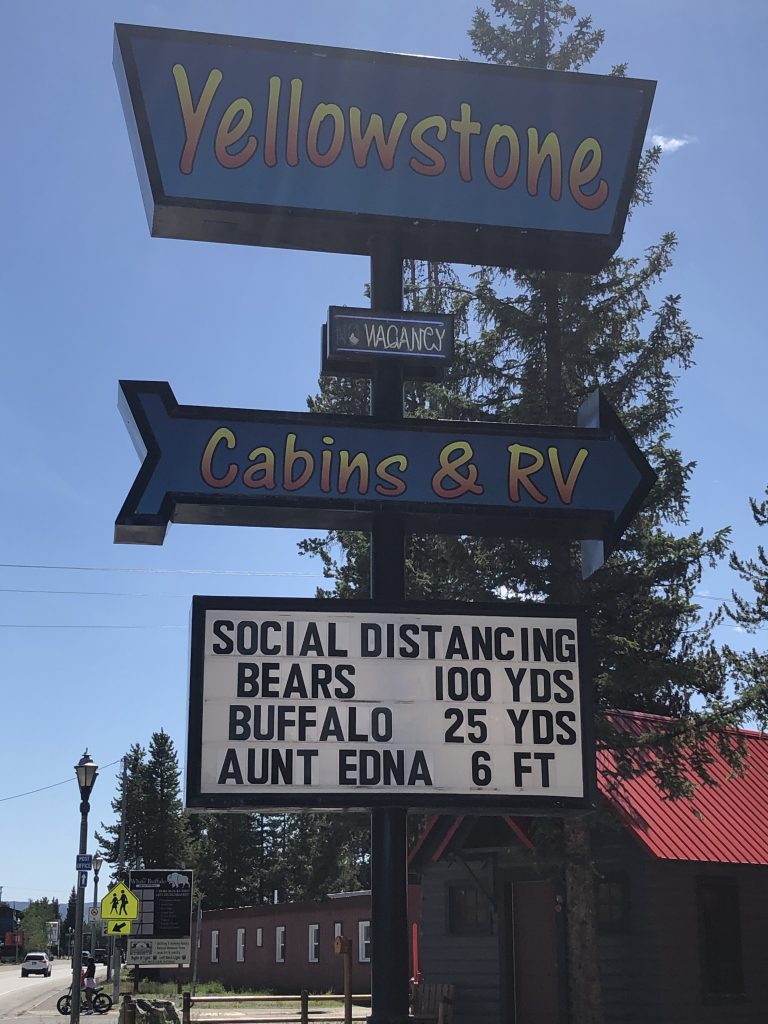
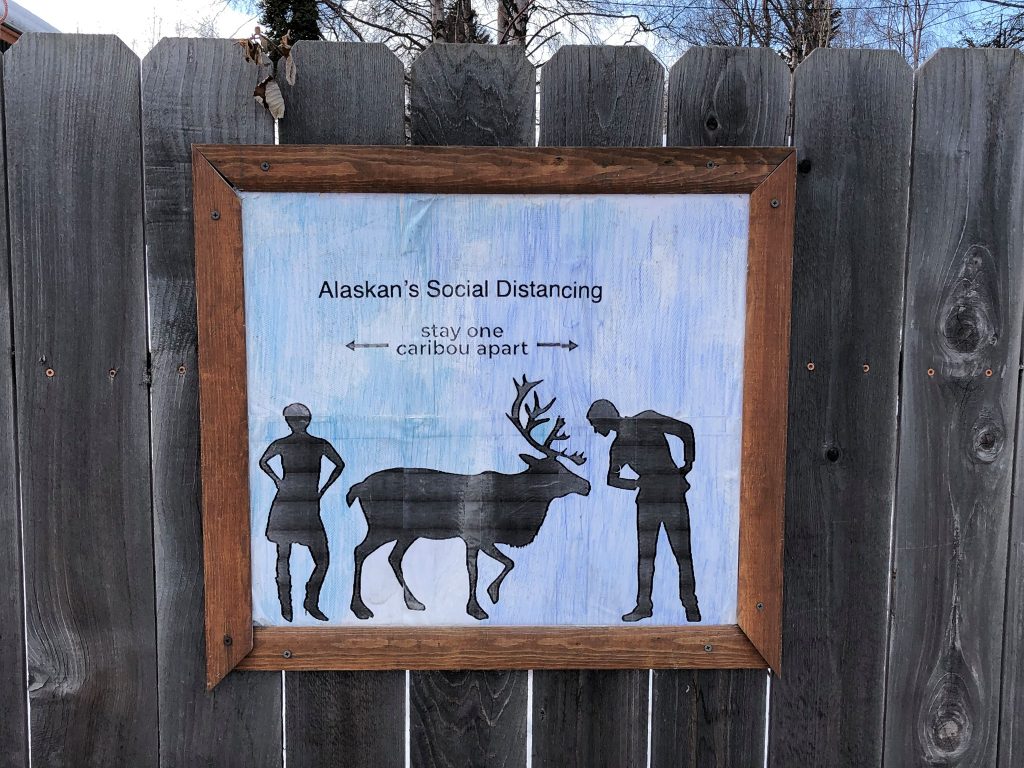
Social distancing can lead to emotional distancing. Working and studying remotely can lead to isolation. Stay in touch with friends and family using the technologies available. Call a mental health professional if you find yourself getting depressed.
Social Media Trends as of May 11, 2022
Facebook #socialdistancing: 3.4 million are posting about this
Instagram #socialdistancing: 12.8 million posts
TikTok #socialdistancing: 5 billion views
YouTube #socialdistancing: 165,000 videos and 36,000 channels
Google Trends: “socialdistancing” wasn’t even a phrase before the pandemic. It appeared in Google Trends during the week of March 8, 2020 which coincided with the arrival of Covid-19. The popularity of the phrase went vertical two weeks later and finally peaked during the week of March 29, 2020 before tailing off that summer as most people by then knew what social distancing meant. The phrase entered popular culture in the spring of that year when country music singer, Luke Combs, wrote a song called “Six Feet Apart.“
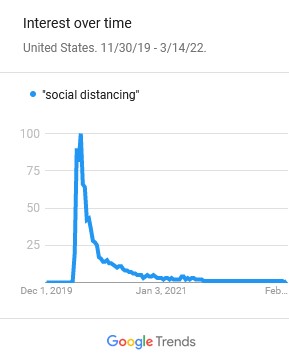
Sources
Sikander, Iqbal. “Social distancing markers at a Whole Foods Market.” Wikipedia. May 1, 2020. URL: https://en.wikipedia.org/wiki/Social_distancing#/media/File:Whole_Foods_Market_-_Toronto_-_20200501110408_(cropped).jpg.
“Social distancing.” Centers for Disease Control and Prevention. October 25, 2021. URL: https://www.cdc.gov/coronavirus/2019-ncov/community/tribal/social-distancing.html#:~:text=Social%20distancing%20is%20an%20essential,spreading%20COVID-19..
“Social distancing.” Merriam-Webster.com Dictionary. URL: https://www.merriam-webster.com/dictionary/social%20distancing.

